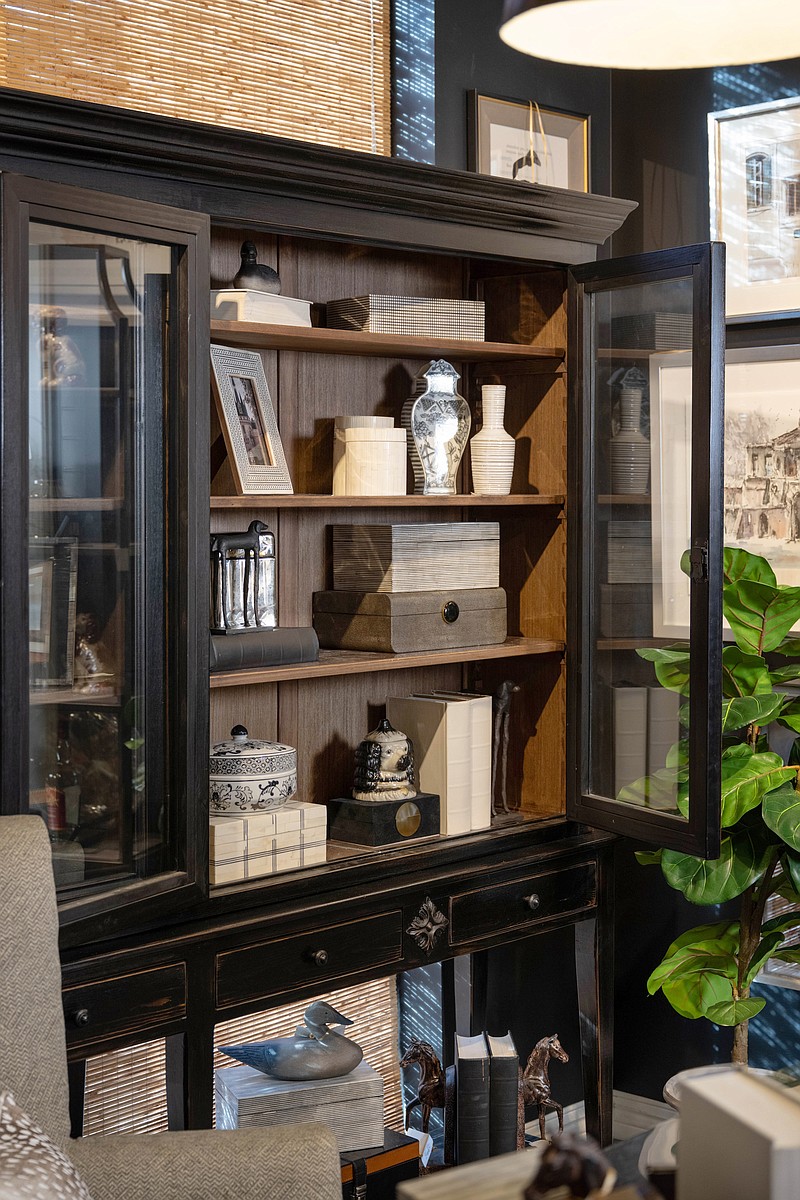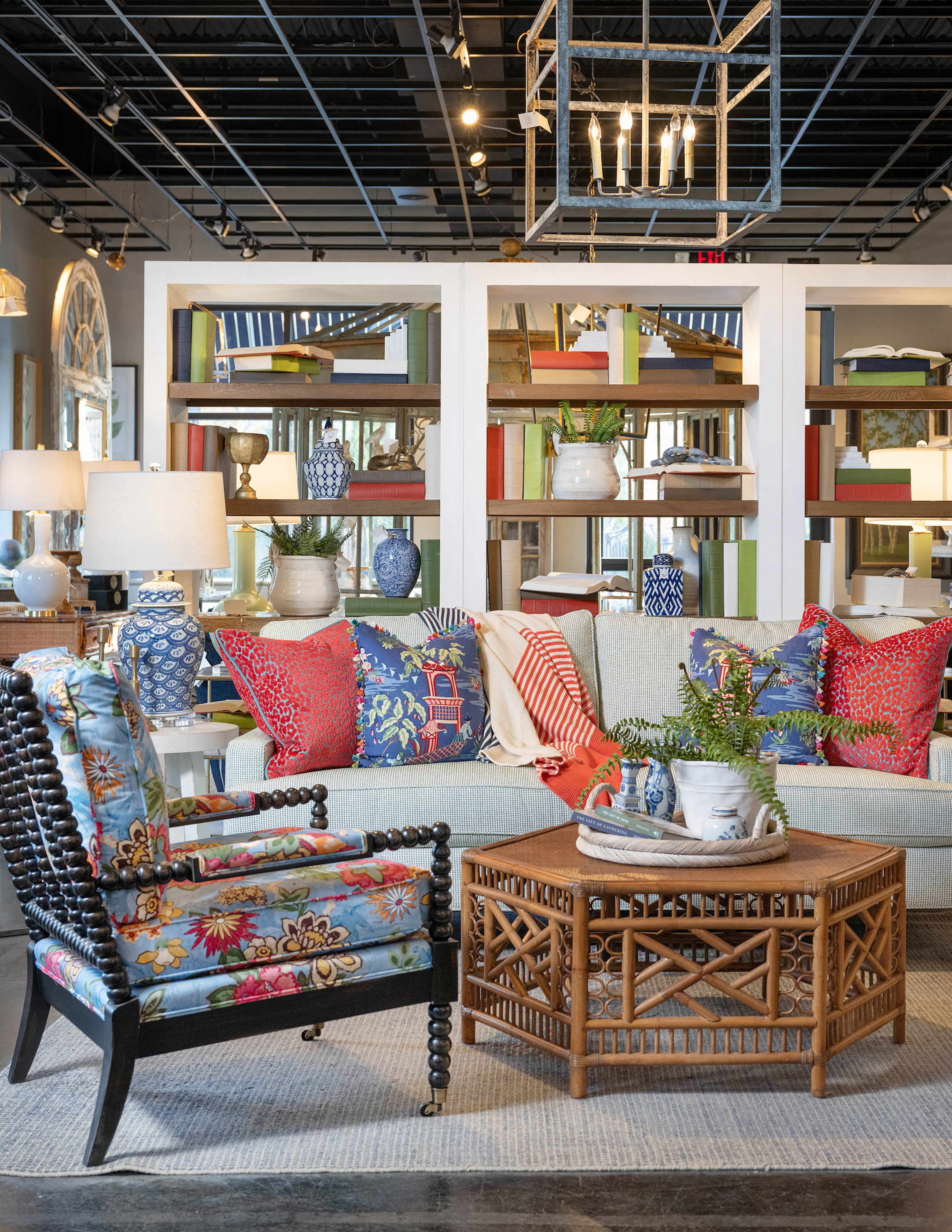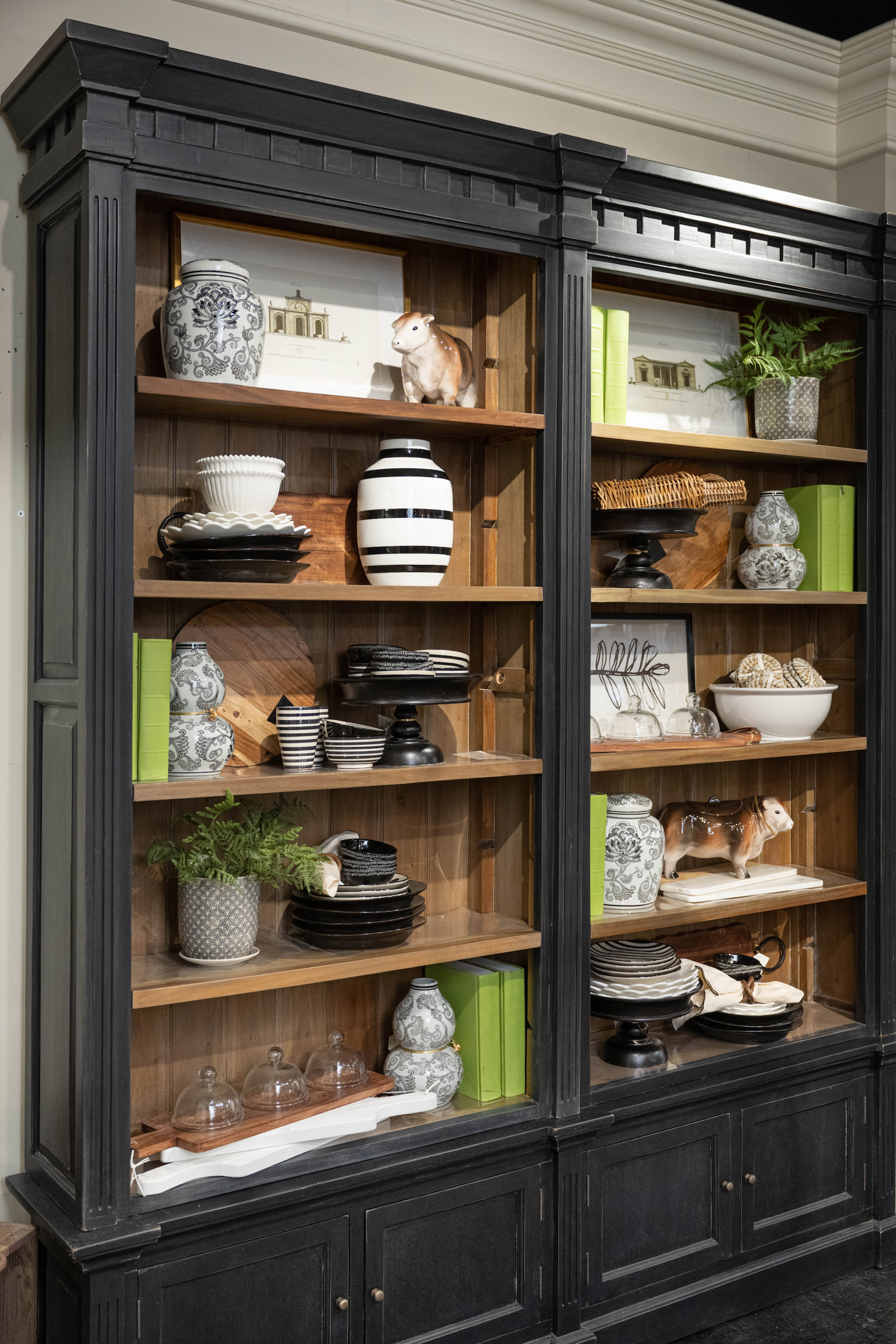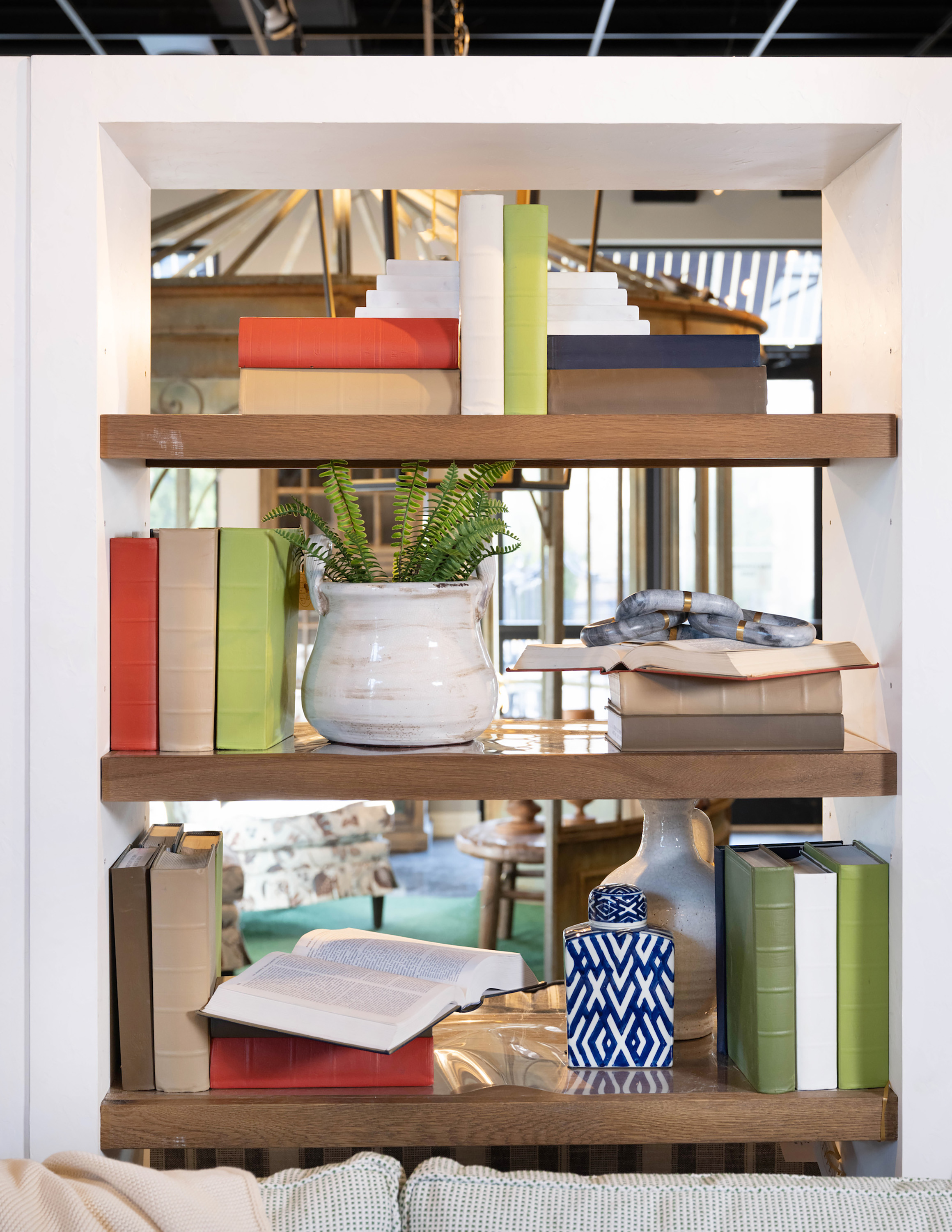Bookshelves are a versatile and functional piece of furniture that can enhance the look of any space in your home.
While they primarily serve the practical purpose of storing books for many, they can also be a great way to showcase your personality and style (with or without books). A well-styled bookshelf can add character and depth to a room, making it feel more inviting and lived-in.
But with so many options to choose from, it can be overwhelming to know where to start.
Here are some practical tips and creative ideas to help you style your bookshelf in a way that reflects your personal taste and elevates the overall aesthetic of your space.
Start with a plan
When deciding to make over my shelves, I find it important to start with a purpose and a plan. I first determine my goal. Am I seeking to incorporate my latest round of design book purchases, display a growing collection of blue and white ceramics, or pull in new colors from a freshly redecorated room? Then it's time to clear the slate -- I like to empty the shelving entirely before placing new items, or the same items in new places.
Gathering up my collection of books and accessories to see how they work together before placing them gives me a feel for whether or not I have the cohesiveness and flow I want. Do I have too much of a certain color? Do I have enough variety of shapes, sizes and textures? Will pieces actually fit (always measure your shelving before shopping)?
When I'm ready to place my items, I find it helpful to start with my largest items or statement pieces first. Carlie, our design manager, suggests beginning with the items you love and placing them in spots where they will shine the most. Then build around them, distributing items so you have a nice flow that draws your eye around the space.
If you're having trouble getting started, try placing your first few large or statement pieces in a rough triangle on your shelves -- one piece toward the top center, another roughly on the middle left, and another on the lower right. Don't worry about making it perfect -- the more organic-looking, the better.
These same styling processes works for styling floating shelves, a curio or bookcase, the top of a buffet or honestly any area where you'd like to create a vignette in your home!
Finding your spacing
One of the most challenging elements to get right during the design process is the use of negative space. Negative or empty space is your friend. Use it in between or on the edges of a shelf to space out smaller vignettes or groupings of items. When designing, I tend to like to create groupings of items in odd numbers like three or five (the caveat being that you can use two things to create symmetry in an arrangement).
You can create contrast between shelves by decorating each level slightly differently than the one before it. If the top shelf has one large centered vignette, style two smaller groupings of items on the shelf below. Using the negative space on the sides and middle of these groupings help to carry your eye throughout the piece.
Making it yours
Styling a bookshelf is a fun and rewarding way to add a personal touch to your home decor. Whether you're aiming for a minimalist look or a maximalist one, the key is to strike a balance between form and function.
You can do lots of little things to turn your bookshelf into a space that truly reflects you. For instance, I love placing small lamps on shelves for mood lighting to soften a space. It's one touch that adds elegance and allows us to use overhead lights less, which is great for when we are winding down in the evenings. Although, this trick may require you to drill a hole in the back of your furniture piece depending on its location in the room, so if you are one that likes to rotate shelf designs often, the permanence of this solution might not work for you (and that's OK).
Don't forget to use the full depth of your shelves for a full-bodied design. Certain items can go behind others (like art or your favorite platter) and create visual interest for the pieces in front. This can be especially helpful if you have a dark, heavy furniture piece you want to brighten up.
Remember to keep experimenting, rearranging and adding new items over time to keep your bookshelf fresh, interesting and a reflection of you. With a little bit of creativity and effort, you can turn your bookshelf into a stunning focal point in any room of your home.
Styling a bookshelf can be a fun and creative process that can absolutely transform the look and feel of a room. What you love is always in style -- there are no hard and fast rules when it comes to bookshelf styling. The key is to find a balance between functionality and aesthetics, and to let your personality shine through.
With a little bit of imagination and effort, your bookshelf can become a focal point in your room that not only showcases your favorite books, but also adds a touch of personality and charm to your space.
Adapted from nellhills.com. Katie Laughridge is the owner of Kansas City interior design destination Nell Hill's. For more information, contact Katie at infonellhills.com.




